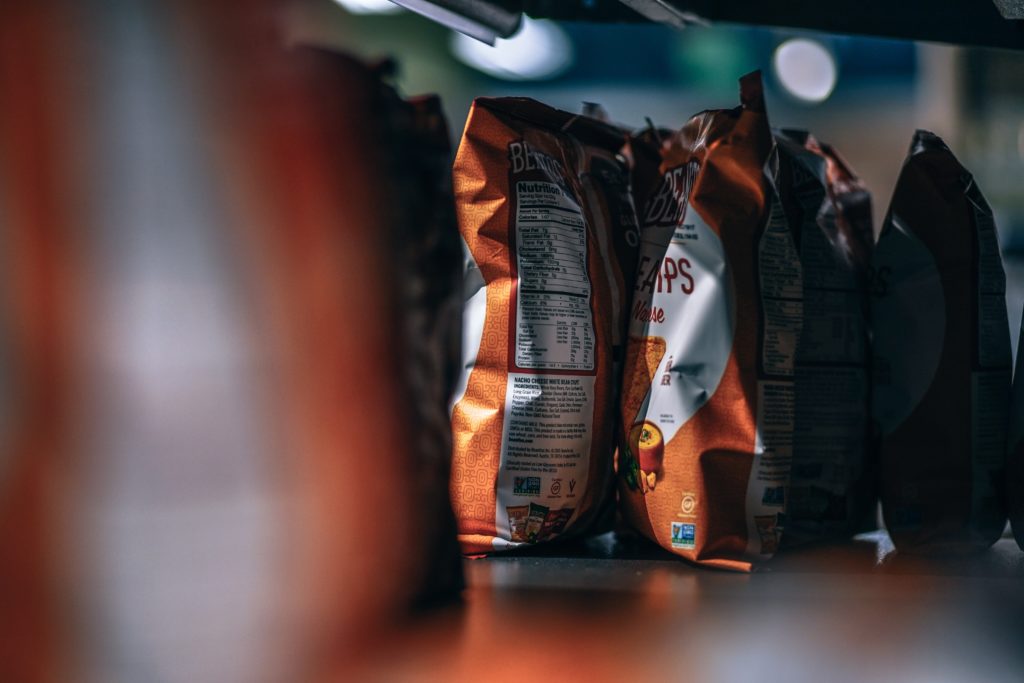All fields are required
Posted in Food Policy,Food Safety on July 28, 2018

Let’s talk blockchain. Wait a minute, don’t leave. I’m not talking about Bitcoin or Cryptocurrency. I’m here to talk about blockchain and our food system.
It’s not as scary as you think. Actually, once we understand the basics, we will see how amazing it is and what life-changing uses. For most, that word is scary. I get it; it was for me at first. Then, once I had a basic understanding, it made (a little) more sense. In part one of this two-part series we will be looking at what exactly is a blockchain, gaining a better understanding of how we can make it work for us, and how we can use it to be healthier. In part two we will dig deeper into how these advances in technology are already in place and the benefits of keeping us and our food safer.
Hold your nose if that’s your thing, we are about to dive into a world of technology. If at the end of this you still have questions, I will leave links to more in-depth reading. Trust me, it is exciting.
What the Heck is this Blockchain I Keep Hearing About?
At its simplest form, the Blockchain is a host of computers (nodes) connected for a common purpose. “The Blockchain is a public ledger where transactions are recorded and confirmed anonymously. It’s a record of events that is shared between many parties. More importantly, once information is entered, it cannot be altered.” (source)
Because the Blockchain is synonymous with cryptocurrency, there is some hesitation in reading and understanding further. All this cryptocurrency talk can be daunting at times but now with a basic understanding of what blockchain is at its core, the next step is exploring what it can do for food and food safety.
Remember before we go further: make the differentiation between blockchain and cryptocurrency now. For the purposes of this post, we care nothing about currency itself. We are focused on blockchain only.
This short video explains more on blockchain and how it works.
https://www.youtube.com/watch?v=3xGLc-zz9cA
Important Keywords to Remember
Take a minute and think about how this could relate to our food safety … I’ll wait.
Can you see it? This is the exciting part.
Food Safety and Blockchain
Part of the issue with food and possible contaminates is tracking. Yes, we have a responsibility to wash food, cook it properly, and wash everything before and after; but, do we really know where our food comes from? If agencies in control of finding out where tainted food originated from and getting to the bottom of mysteries surrounding outbreaks, having a ledger of every food product would go a long way.
E. coli has been in the news lately with multiple outbreaks countrywide. The latest being from Romaine lettuce. As of May 1st, 121 people have been infected with one fatality in California. Twenty-five states and a lot of questions the CDC finally found that the lettuce came from the Yuma, Arizona region. Then, it was linked to canal water contamination. But still, no one farm was implicated.
So, this is still an ongoing issue, and I will interject here: make sure you know where your Romaine lettuce came from and wash your food thoroughly.
Tracking a food product from inception to delivery and every stop in between would be groundbreaking. As of the writing of this article, Wal-Mart has implemented such a program. Of course, this technology is in the infancy stage with many unforeseen problems ahead. But only time will tell if this is going to help consumers feel safe when buying products and keep businesses transporting the product honest.
The Downside – Or is it?
Believe it or not, there are those who want nothing to do with Blockchain and what it could do for consumers. I do not fault their opinions but I believe there is a bigger picture here we need to focus on and consider.
Intermediaries, those “middle-men” who make a living working for both sides could be hit the hardest. Being the sole provider of trust and process flow can be a large responsibility but also a detriment to those at the mercy of such agencies. By removing this middle-man, the Blockchain can improve trust, boost trade, and most importantly lower costs. This can cause thousands of jobs to be removed and that will need to be addressed at some point; however, the positives I believe outweigh the negatives.
You Don’t Have to be Scared Anymore
I know this is only the beginning for you and we barely scratched the surface. I will not lie – it is a tough concept to fully understand. I’m still learning every day. But now, with a basic understanding of what it is and how it works, it should be a little less scary.
Blockchain is a powerful tool and in the coming months and years will be utilized for many things we can only begin to think about. What is important is its staying power and ability to make our lives better. It may be wise to understand more as we usher into a new age with this technology.
In part two we will focus more on food safety and what the Blockchain can do for all of us.
In the mean-time, here are a few resources to further your reading and understanding. Never stop learning, even if the subject matter seems to be over your head. You may just surprise yourself. Don’t get discouraged if some of this information is deep at first. Hang in there for another article soon coming on this exciting new tech.
By: Dwight Spencer, Contributing Writer (Non-Lawyer)